It’s the story of a meeting between a requirement, that of SYTRAL Mobilités, and an expertise, that of the project management group SYSTRA/Ilex/Presents/Strates/Transitec. For SYTRAL Mobilités, integrating environmental issues into its transport projects is a major challenge. This is a piece of luck: SYSTRA has developed a framework for sustainable design and construction that puts environmental performance in the spotlight and enables the creation of infrastructures capable of addressing the challenges of climate change.
SYTRAL Mobilités, the organising authority for Lyon’s transport, has already called on SYSTRA, which contributed to the design of nearly half of its network. In 2021, the project management group, of which SYSTRA is the lead, was chosen as the project manager and the infrastructure works for the T10 tram started in January 2024. Once operational, this tram will be the first large-scale implementation of the approach developed by SYSTRA. Here’s the story.
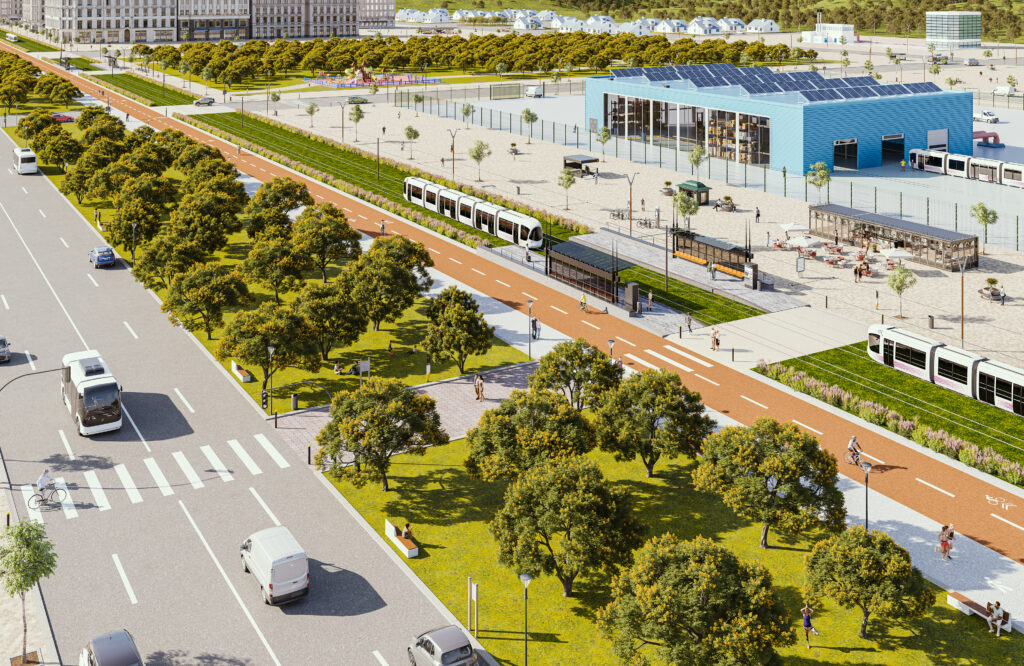
8
kilometres of line
14
stations
1
depot
22,000
passengers per day
2026
commissioning
A new approach
The sustainable design approach developed by SYSTRA starts from the observation that transport infrastructure projects have an impact that goes far beyond the carbon emission balance: biodiversity, water cycle, noise and light pollution, resource management, adaptation to climate change, the challenges are numerous.
The choice of sustainable design in projects is therefore a preferred response to climate change: it is indeed a set of criteria to be taken into consideration.

“Sustainable design means broadening our understanding of the performance of infrastructures to consider their impact not only in terms of operational efficiency but also in terms of environmental efficiency, quality of life, landscape integration, and services provided to ecosystems.”
Christelle Chichignoud, Vice-President Sustainability
On the T10 project in Lyon, the framework for sustainable design and construction provided a methodological framework to ensure that all criteria are comprehensively considered in a transport infrastructure design project.
According to Aurélien Le Bot, project manager, “the framework allowed the project team to quickly identify the major environmental issues of the project, beyond the elements stipulated in the contract, and to provide the client with a clearer vision of the situation.”
The goal of the project is to make the T10 a tramway that meets the four challenges of sustainable design:
- Efficient resource management
- Mitigation of climate change and adaptation to its effects
- Preservation of the natural environment
- Quality of life
A methodical approach
The framework for sustainable design and construction effectively breaks down each aspect of a project into systems and subsystems, allowing the designers and engineers of SYSTRA and its consortium to make appropriate proposals for each subsystem.
- Decomposition of the infrastructure into systems and subsystems: decomposing allows for the identification of the elements to be considered, their potential environmental impact, and the management of sustainable design to be organised;
- Identification of sustainable design challenges: each subsystem lies at the intersection of challenges and environmental criteria that sustainable design helps to reveal and weigh;
- Selection of critical elements: once the challenges are identified, we isolate the most sensitive elements to have an impact on a maximum of criteria.

“Sustainable design leads us to consider the infrastructure throughout its entire lifecycle. It is a broader and more nuanced approach to overall performance, which guides our role as a project management assistant and then as a project manager. It adds a new dimension to our relationship with our stakeholders, with more demanding specifications that encourage the invention of new ways of working.”
Aurélien Le Bot, Sustainable design manager, T10 project
A holistic approach
Once the critical elements have been isolated, performance criteria suitable for each of them are determined and possible solutions are studied to choose those that will meet these criteria.
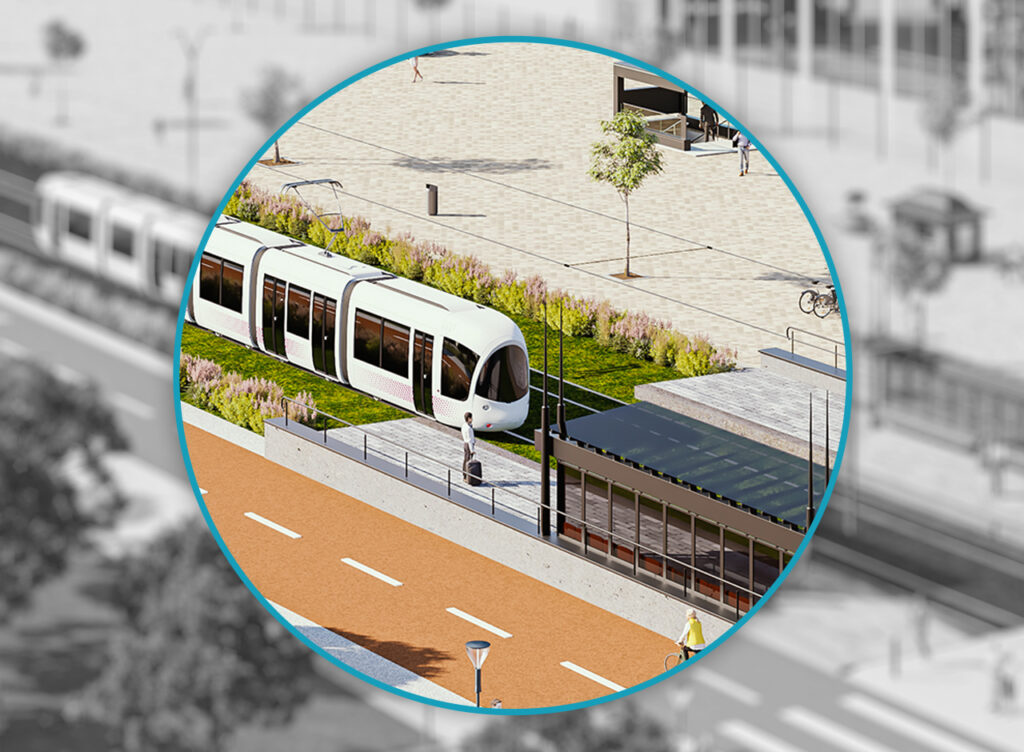
Tram Platform
The digital solution CarbonTracker developed by SYSTRA has allowed for the comparison of different types of platforms using a complete lifecycle approach, calculating the impact of each option: mineral concrete platform (900 TeqCO2), green concrete platform (646 TeqCO2), and grassed platform on beams (467 TeqCO2).
In the end, the right balance between avoided carbon emissions and economic cost for the entire lifecycle led the project team to propose the grassed platform on beams. This solution has allowed for a 22.8% reduction in the carbon footprint of the platform.
Removing impermeable surfaces and stormwater management
The Lyon metropolitan area faces significant challenges in stormwater management. The footprint of the T10 was an opportunity to limit discharges into a network that had reached saturation, by studying a mix of solutions throughout the entire route.
50% of the T10 surfaces have been made entirely permeable and allow for the infiltration of rainwater. Only 32% of the surfaces cause a direct discharge into the network.
Within the group, llex provided its expertise in landscape design and materials, while Presents worked on stormwater management.
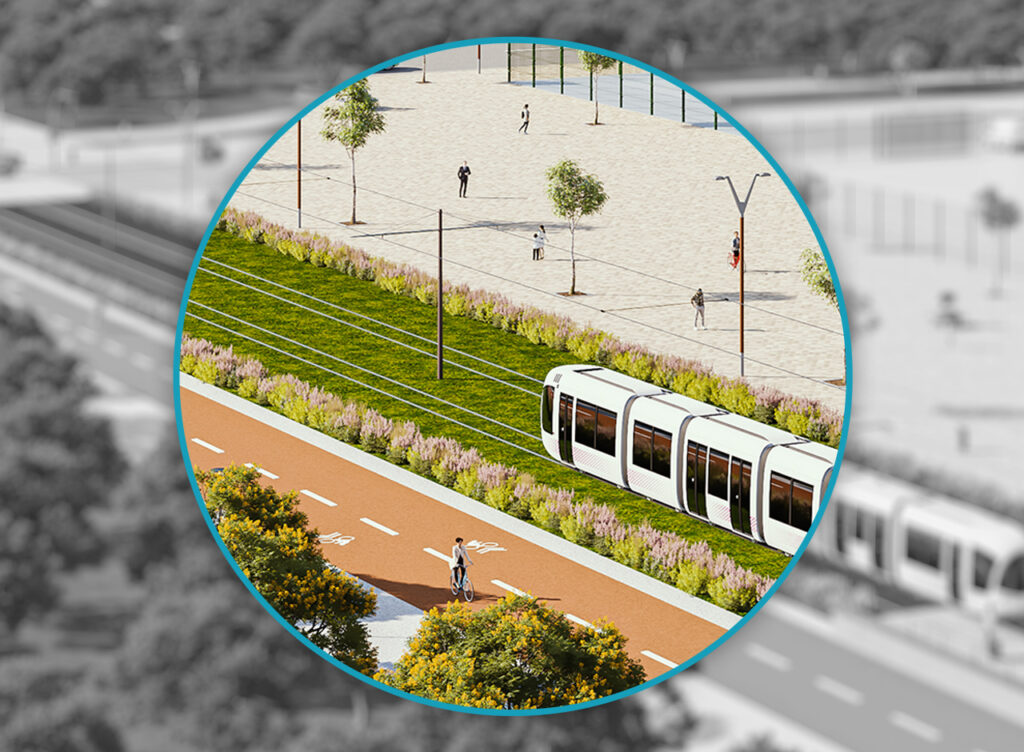
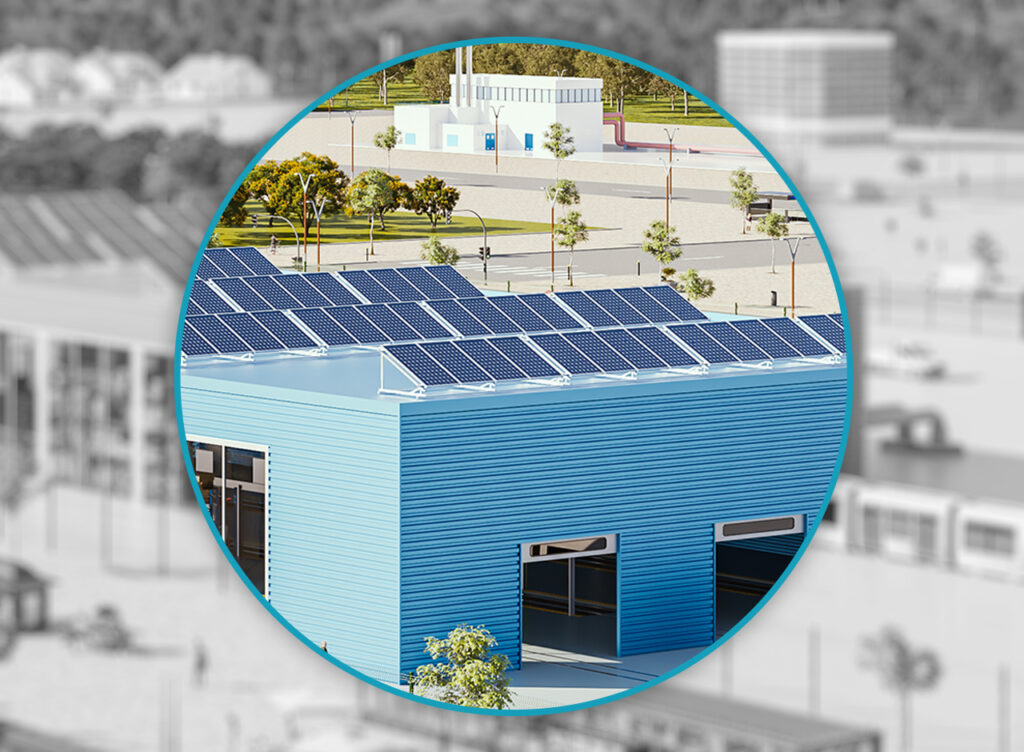
Energy Management of the Depot
An energy audit of the depot’s needs revealed opportunities for optimising production and consumption at the site. The proximity of a biomass power plant presented an economic opportunity to connect the site to the urban heating network. This allows 65% of the heating needs of the workshop to be covered with low-carbon energy.
Solar thermal equipment covering an area of 60m² meets all the site’s hot water needs. Photovoltaic solar equipment of 2,600m² complements the coverage of the site’s energy needs.
Roadway Surfacing
A mix of surfaces was chosen to address issues of permeability, comfort, heat island mitigation, and future maintenance: paved roads, light-coloured asphalt pavements to reflect rather than absorb heat, and permeable asphalt for cycling paths.
The choice of materials related to the uses and configuration of each surface allows the infrastructure to optimise its resilience while minimising its impact.
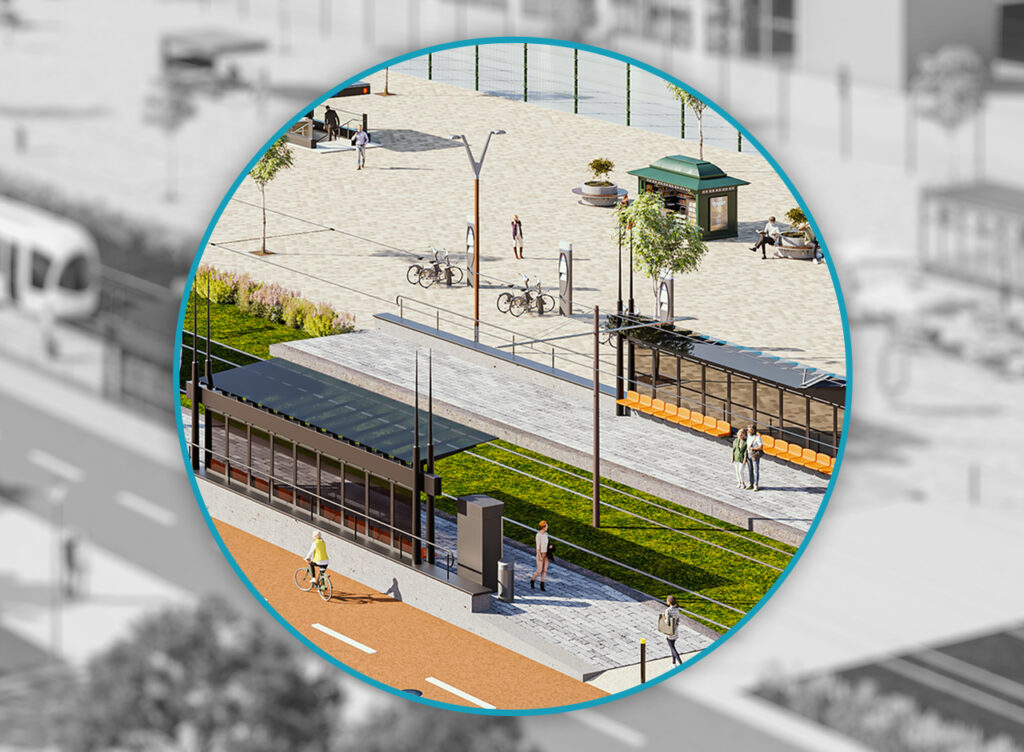
A demanding approach
The implementation of a tram line generally impacts the redevelopment of public space. The high requirements of SYTRAL Mobilités and the Metropolis of Lyon have led the engineering consortium SYSTRA/Ilex/Presents/Strates/Transitec to implement initiatives aimed at minimising the environmental impact of the T10 project:
- The excavation materials from the site have been retained for future reuse;
- The planting of trees was naturally considered in the design. Strategically placed trees will create biodiversity and shade, acting as ‘cooling islands.’ Among the plants chosen to create these islands, 70% are of native and Mediterranean species;
- In terms of lighting, detection-triggered lighting and semi-darkness are also being studied.
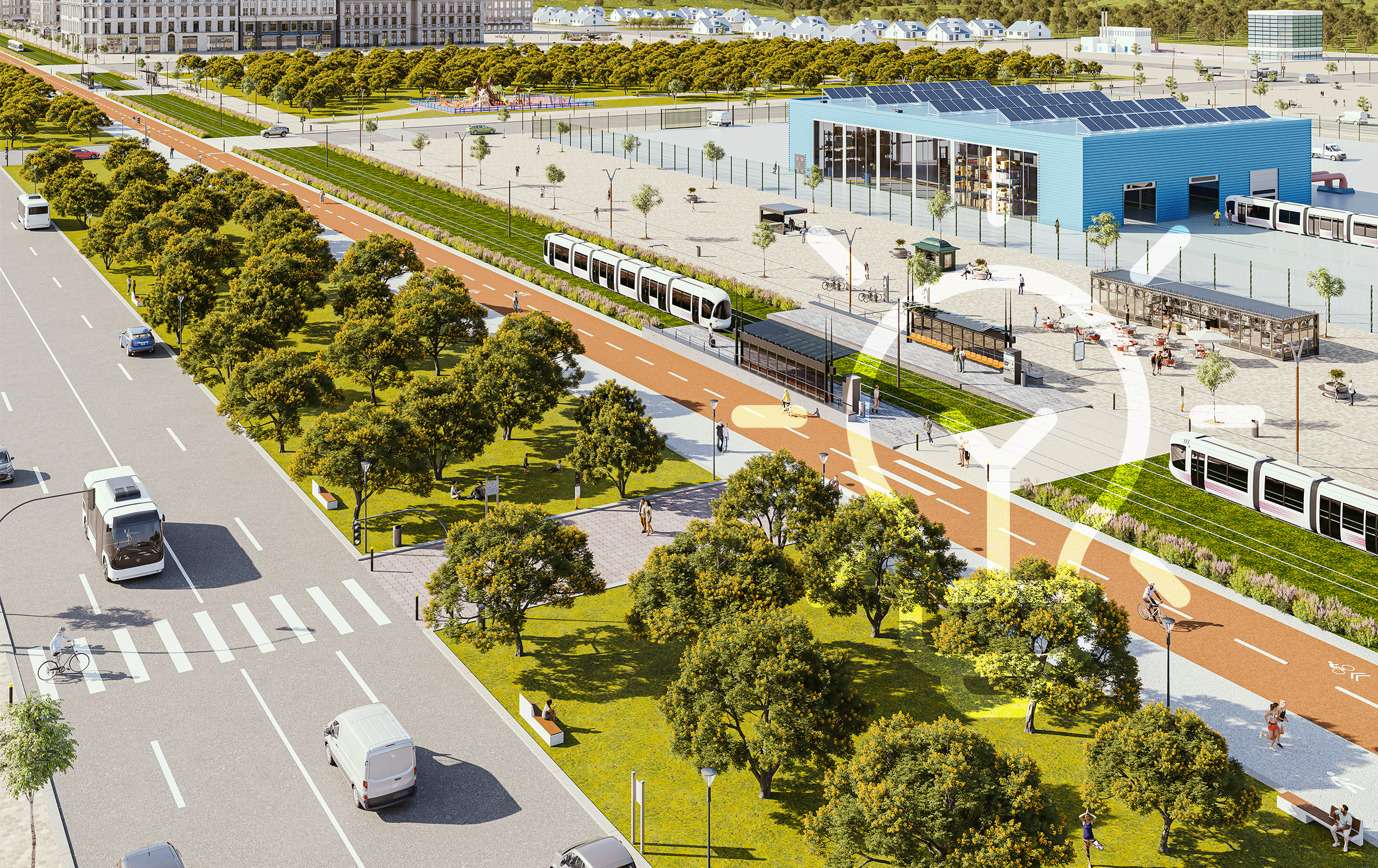
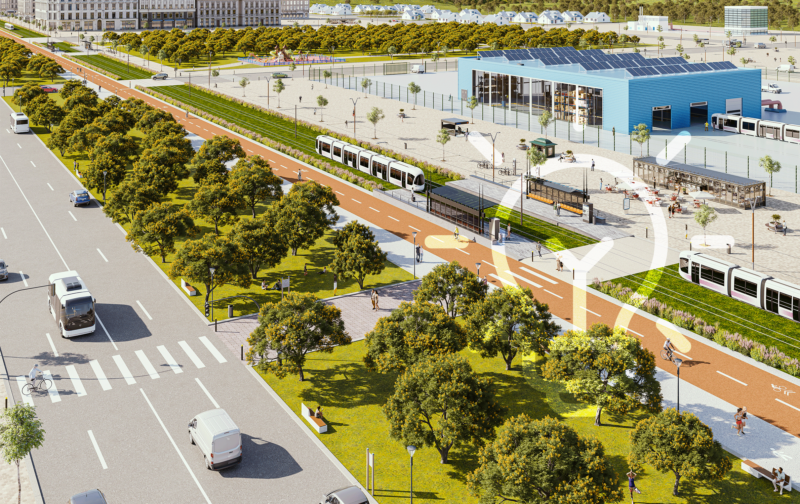
 Australia
Australia  Brazil
Brazil  Canada
Canada  Chile
Chile  China
China  Columbia
Columbia  Denmark
Denmark  Egypt
Egypt  France
France  India
India  Indonesia
Indonesia  Ireland
Ireland  Italy
Italy  Malaysia
Malaysia  New Zealand
New Zealand  Norway
Norway  Panama
Panama  Peru
Peru  Poland
Poland  Portugal
Portugal  Saudi Arabia
Saudi Arabia  Singapore
Singapore  South Korea
South Korea  Spain
Spain  Sweden
Sweden  Taiwan
Taiwan  Thailand
Thailand  Türkiye
Türkiye  United Kingdom
United Kingdom  United States
United States  Vietnam
Vietnam